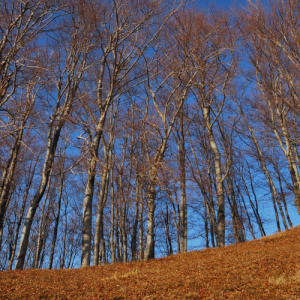Fertilize Your Ornamentals in the Late Fall For A Great Spring
October 10, 2021 | By: Gary Snyder

Trees and shrubs growing in their natural habitats rarely display symptoms of nutrient deficiency. This is not only due to the natural recycling that occurs in nature but also the fact that plants in the wild typically grow only where they are adapted to, or they have a competitive advantage.
Enter the human. The landscape plantings we install are, for the most part, installed into an artificial habitat. Soils can be very different from those of the native habitat of the plant we have taken hostage. The natural recycling system that Mother Nature put into place may be altered or diminished as a result of our planting designs and maintenance practices, like collecting the leaves instead of allowing them to decompose. This is why proper maintenance of soil fertility and plant nutrition requirements are so important when we practice IPM or PHC programs.
Fertilizing your trees and shrubs can be confusing
Do trees need fertilizer? If so, when and what type of fertilizer do I use?
Here are a few basic ideas on when, why, and how to fertilize. Trees, like other plants, may not receive all the nutrients it needs to thrive in captivity. We all know that very few yards have perfectly balanced soil conditions, and without proper nutrition, trees can become subject to insect and disease issues as well as poor growth. But not all trees need fertilizing! Newly planted trees in the first grow season need time for their roots to establish before we fertilize them. Trees that have damaged root systems by construction or trees that are under stress don’t need fertilizer either. Give them time to heal and get healthy on their own before enhancing them with fertilizer.
The basics of late fall fertilizer for ornamentals
Step 1: take a soil test
How are you going to fertilize something if you don’t know what it needs? A simple soil test can tell you what type of environment the plants living in and what it is lacking. Green Velvet is your source for soil samples. Contact your Green Velvet representative to learn more regarding the sampling process.
Step 2: select the right type of fertilizer
After seeing your test results, you and your Green Velvet representative can select the proper fertilizer for your plant’s needs. We carry the Sanctuary Organic fertilizer line for trees and shrubs. Sanctuary offers granular, tablets, and soluble fertilizers to match your application needs. We also carry the industry standard 14-14-14, slow-release, granular fertilizer. Water-soluble fertilizers with analysis to match your needs are also available from us.
Step 3: application timing is everything
The general thought on fertilizing trees had been to feed them in early spring, prior to the beginning of active growth. While there is nothing wrong with this, we need to be sure that the fertilizer is not just moving off-site because of frozen or saturated soils.
Many experts recommend that late fall, about a month after the first hard frost, is a much better time to fertilize. Deciduous trees have lost their leaves by this time, and the active growth slows down. So instead of growing new foliage and top growth, the trees can focus on moving nutrients to root development and better tree health. Any excess nutrition is then stored in the root system for the next spring growth. Soil temperatures should be warm enough for the tree roots to still be active and again, never apply fertilizer to frozen soils, as this risks the off-site movement of fertilizer, which creates environmental issues.
Green Velvet has the perfect late fall fertilizer for ornamentals
Browse our wide variety of ornamental fertilizers anytime. Contact your salesperson or nearest Green Velvet branch to purchase or for further guidance on selecting the ideal fertilizer for your ornamentals.